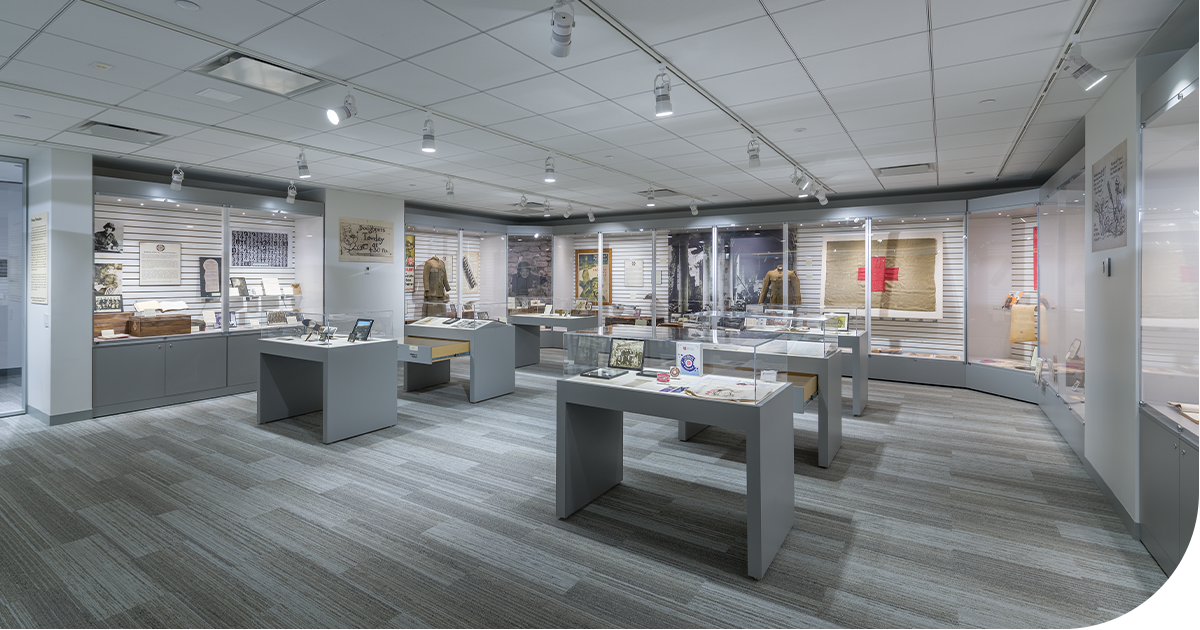Most collecting institutions have some space for exhibiting their collections as part of a teaching mission, a sharing with the public, or a combination of these and other factors. It is in the preparation for installation, during the installation process, and while on exhibit that objects are exposed to a greater risk of damage than when they are safely housed in storage. Several factors should be taken into consideration when planning your exhibits.
Environmental Controls
A stable temperature and relative humidity are critical to most artifacts. The safest environment is ventilated with a supply of filtered air that is kept at steady temperature and humidity levels. In addition to ushering in the weather from outside, open doors and windows also expose artifacts to pollutants and contaminants that will accelerate the aging process.
Creating a microclimate using silica gel and an enclosed exhibit case, shadow box, frame or vitrine is a convenient and effective way to control the environment of your artifacts. Remember to monitor the environment with a data logger, thermohygrometer or humidity indicator card to ensure that levels stay steady in whatever environment you decide to use for your exhibits.
Shop Temperature & Humidity Monitors >
Light
Unfiltered light contains damaging ultraviolet (UV) rays that can eventually cause discoloration, drying and cracking of your artifacts. It is important to keep light levels low and filtered to guard against any irreparable damage.
A light meter will help you adjust the lighting to within the recommended five to 15-foot candle range. Remember to use UV screening filters over fluorescent lights and UV filtering film over windows. Blue scales placed in cases and near objects will tell you the degree of fading over time.
Objects of vulnerability should be allowed to rest after they’ve been on display for some time. If possible, lights should be turned off completely when no one is in the exhibit gallery.
Shop Light Monitors & Meters >
Security
When exhibits are open for viewing, large institutions have security guards stationed throughout their galleries to protect artifacts on display. Smaller organizations, however, rely on less costly security measures ranging from cameras and volunteers to locked cases and the honor system.
Security screws and straps that attach to frames and case tops are an inexpensive, dependable method of deterrence. Discreet, object motion alarms that emit a high-pitched sound when a case or frame is jarred are also excellent tools for deterring tampering and theft.
Movement and Handling
The simplistic act of transporting an artifact from storage to an exhibit gallery can result in damage. Train all of your exhibit installation personnel in appropriate handling techniques. Always plan a movement before you make it. Objects should be held with two steady hands at all times.
Larger artifacts will require at least two people to carry them and another person to clear a path and open any doors. Use proper installation materials such as strong wire or cable to support framed work and pedestals wide and sturdy enough to support artifacts.
Display
Displaying artifacts needs to be a careful balance between visibility and safe support for the item. Use only display and mounting materials that are safe to be in contact with artifacts for extended periods, such as acrylic, powder-coated metal, and fabrics with archivally safe dyes.
Make sure that the artifact is completely supported, especially under fragile areas or pieces that may hang down or protrude away from the artifact. Do not attach mounting materials to the artifact or pin through the artifact to mount it.
For Further Reading:
Balloffet, Nelly and Hille, Jenny. Preservation and Conservation for Libraries and Archives. American Library Association: Chicago, 2005. See Section Six, Chapter One, “Designing the Exhibition with Conservation in Mind.”
Glaser, Mary Todd. “Protecting Paper and Book Collections During Exhibition”. ©2007 Northeast Document Conservation Center.

